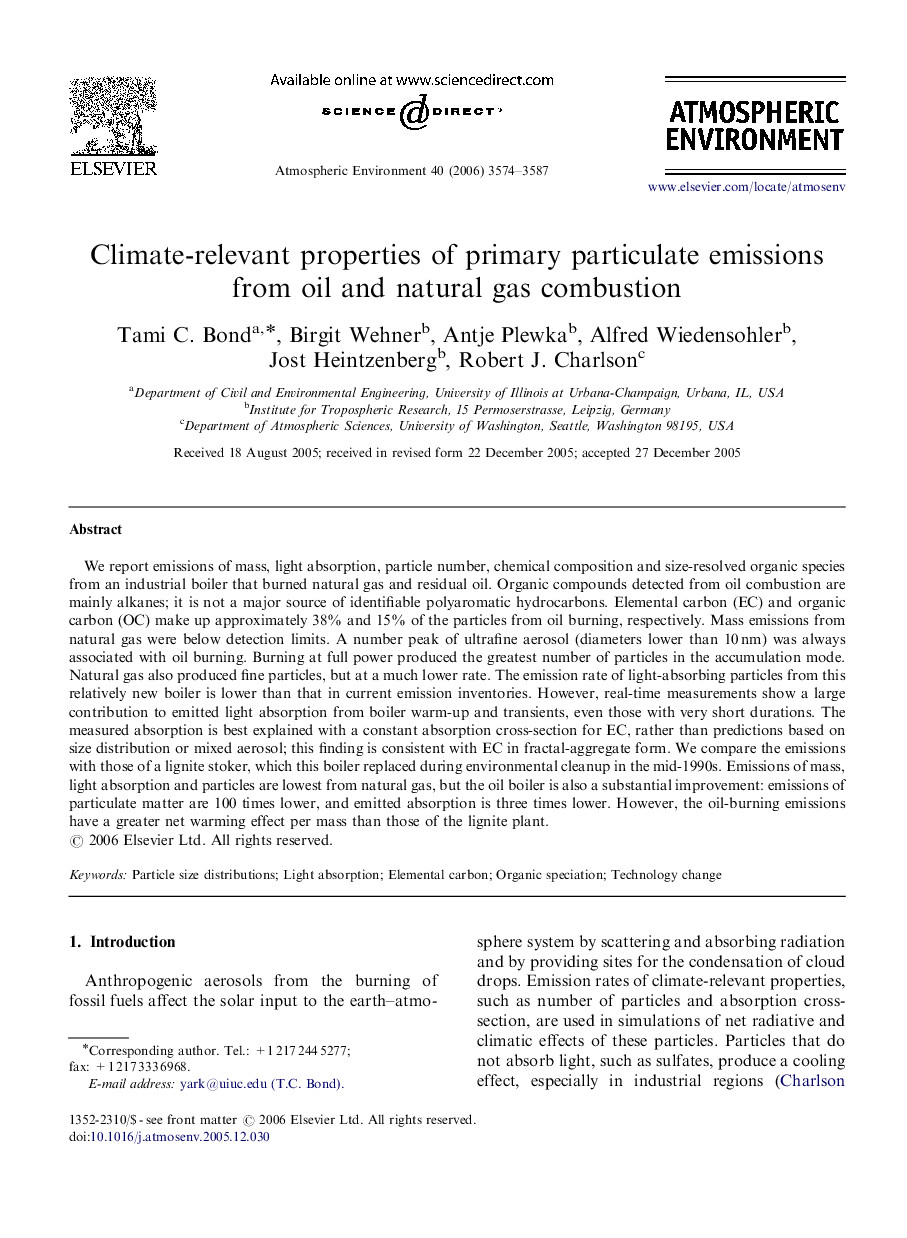| کد مقاله | کد نشریه | سال انتشار | مقاله انگلیسی | نسخه تمام متن |
|---|---|---|---|---|
| 4444719 | 1311252 | 2006 | 14 صفحه PDF | دانلود رایگان |

We report emissions of mass, light absorption, particle number, chemical composition and size-resolved organic species from an industrial boiler that burned natural gas and residual oil. Organic compounds detected from oil combustion are mainly alkanes; it is not a major source of identifiable polyaromatic hydrocarbons. Elemental carbon (EC) and organic carbon (OC) make up approximately 38% and 15% of the particles from oil burning, respectively. Mass emissions from natural gas were below detection limits. A number peak of ultrafine aerosol (diameters lower than 10 nm) was always associated with oil burning. Burning at full power produced the greatest number of particles in the accumulation mode. Natural gas also produced fine particles, but at a much lower rate. The emission rate of light-absorbing particles from this relatively new boiler is lower than that in current emission inventories. However, real-time measurements show a large contribution to emitted light absorption from boiler warm-up and transients, even those with very short durations. The measured absorption is best explained with a constant absorption cross-section for EC, rather than predictions based on size distribution or mixed aerosol; this finding is consistent with EC in fractal-aggregate form. We compare the emissions with those of a lignite stoker, which this boiler replaced during environmental cleanup in the mid-1990s. Emissions of mass, light absorption and particles are lowest from natural gas, but the oil boiler is also a substantial improvement: emissions of particulate matter are 100 times lower, and emitted absorption is three times lower. However, the oil-burning emissions have a greater net warming effect per mass than those of the lignite plant.
Journal: Atmospheric Environment - Volume 40, Issue 19, June 2006, Pages 3574–3587